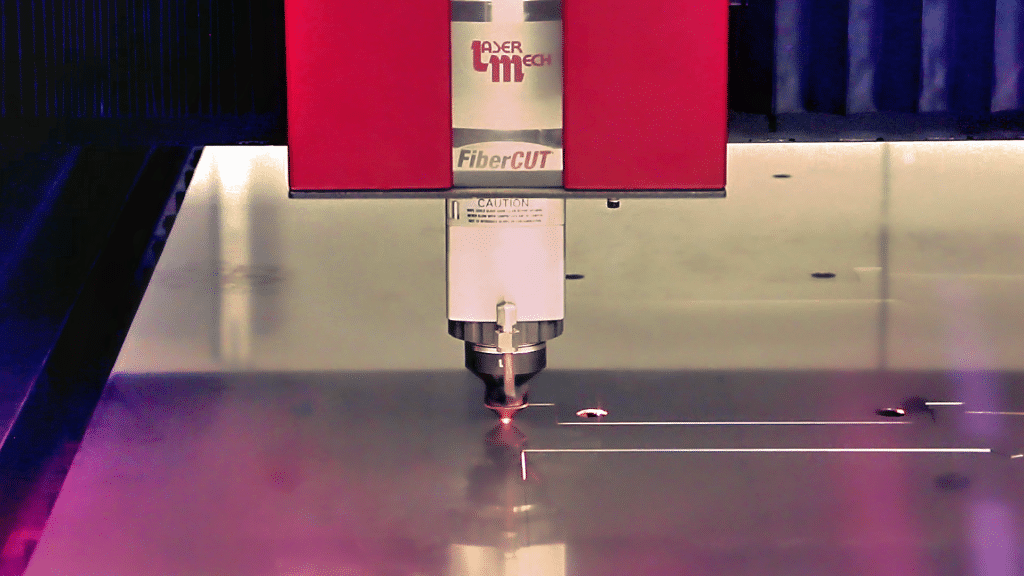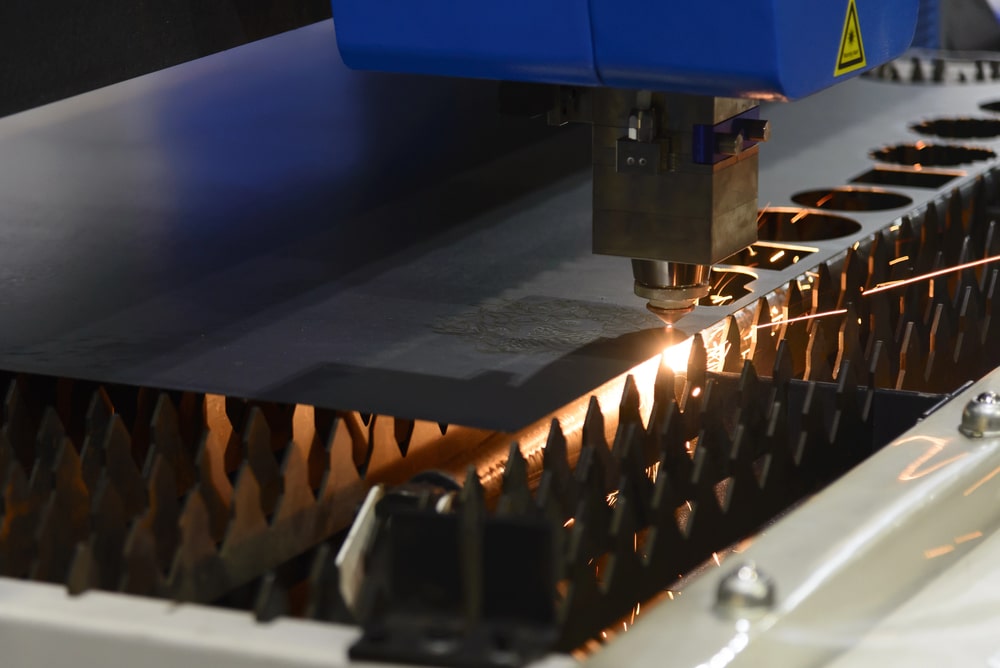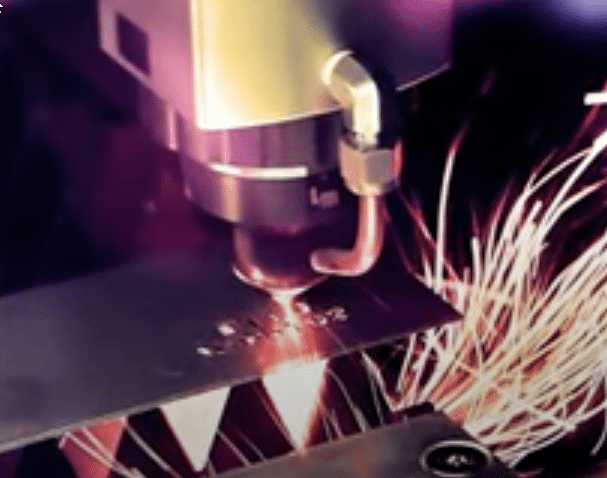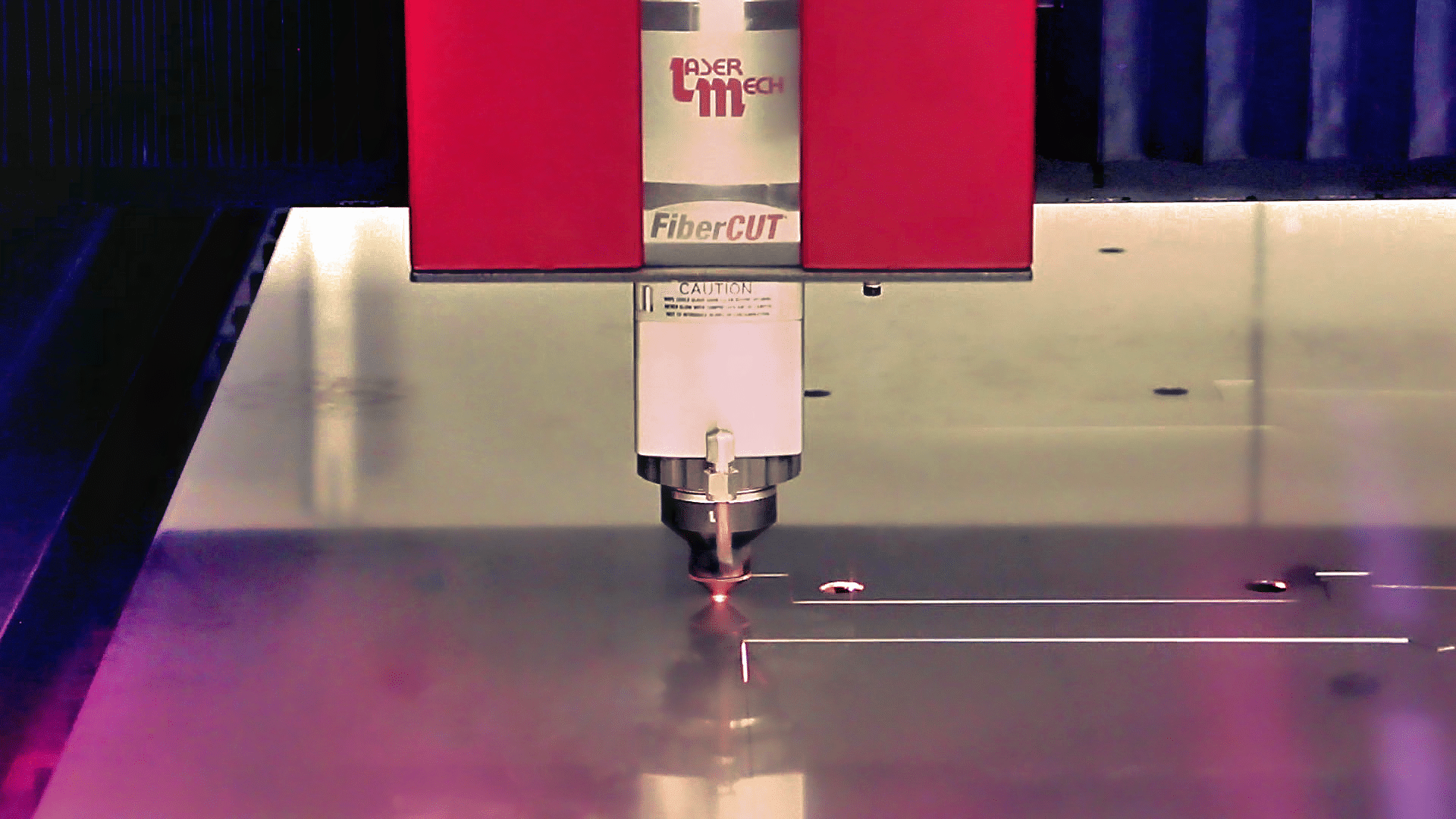Cutting Edge Conundrum: CNC vs Laser Cutter for Precision Cutting
Introduction to CNC and Laser Cutting
In today’s fast-paced manufacturing world, precision and efficiency are paramount. CNC (Computer Numerical Control) machines and laser cutters have emerged as two titans in the realm of fabrication and manufacturing. Understanding the capabilities and differences of these tools is essential for manufacturers and metal fabricators alike.
 CNC machines have long been the backbone of automated machining, capable of producing intricate parts with high precision. They work by reading coded instructions and driving a machine tool to cut, mill, or drill materials based on pre-programmed specifications. In contrast, laser cutters use a concentrated beam of light to slice through materials, offering unparalleled precision and speed.
CNC machines have long been the backbone of automated machining, capable of producing intricate parts with high precision. They work by reading coded instructions and driving a machine tool to cut, mill, or drill materials based on pre-programmed specifications. In contrast, laser cutters use a concentrated beam of light to slice through materials, offering unparalleled precision and speed.
In this post, we’ll explore these two technologies further. We’ll focus on their mechanics, costs, versatility, speed, automation, and maintenance requirements. We’ll also share some real-world success stories to help you decide which tool might be right for your next project.
The Mechanics
At their core, both CNC machines and laser cutters serve the purpose of material removal, but they operate in fundamentally different ways. CNC machines utilize various tools, such as lathes or mills, to physically carve out parts from a solid or hollow block of material. This versatility allows them to work on metals and plastics.
Laser cutters operate using a high-powered laser beam generated by a laser source. The beam is directed towards the material, where it melts, burns, or vaporizes away, allowing for incredibly fine cuts. Laser cutters are known for their ability to handle thin metal materials with delicate precision.
The precision offered by both technologies is impressive, but each has its own strengths. CNC machines excel in creating complex three-dimensional shapes, while laser cutters shine in producing intricate two-dimensional patterns with minimal material waste. Understanding these mechanical differences is key to selecting the appropriate tool for your project.
Cost Analysis
One of the most significant factors in choosing between CNC machines and laser cutters is the cost. CNC machines often require a high initial investment due to their complex mechanics and the need for various tooling options. They also incur ongoing costs associated with tool replacement and regular maintenance.
Laser cutters, while not cheap, are generally less expensive than CNC machines. Laser cutter’s laser sources have a longer lifespan compared to CNC tooling, reducing ongoing expenses. However, the power consumption of laser cutters can be higher, depending on the material type and thickness.
Despite these costs, both technologies offer a substantial return on investment through increased efficiency, reduced labor costs, and precise repeatability. Weighing the initial and operating costs against potential productivity gains will help determine the most cost-effective option for your needs.
Versatility and Flexibility
Versatility is a key advantage of both CNC and laser cutting technologies. CNC machines are known for their flexibility, capable of switching between different tools and processes within a single setup. This adaptability allows them to work on a wide variety of materials and produce complex shapes.
Laser cutters, too, offer significant versatility. They can cut, engrave, and etch a range of materials with high precision. Additionally, the non-contact nature of laser cutting minimizes material deformation, making it ideal for delicate tasks.
The choice between the two often depends on the specific requirements of the project. If your work involves 3D design, CNC machines may provide the flexibility you need. Conversely, if you’re focused on high-speed production and precision cuts for 2D work, laser cutters could be the better fit.
Speed and Efficiency
Speed and efficiency are crucial factors in any manufacturing process. CNC machines, with their ability to perform multiple operations in one setup, can be highly efficient for complex parts manufacturing. However, the speed of CNC machining is often limited by the mechanical movement of the machine components.
Laser cutters, on the other hand, are renowned for their speed, especially when working with thin materials. The laser beam moves at a high pace, cutting through materials quickly and precisely. This speed makes laser cutters ideal for high-volume production runs.
When considering speed and efficiency, it’s essential to evaluate the nature of your projects. For intricate, high-volume tasks, laser cutters may provide the edge in efficiency, while CNC machines may be preferred for detailed, multi-step processes.
 Automation and Complexity
Automation and Complexity
Automation is a driving force behind modern manufacturing, and both CNC and laser cutters offer varying levels of automation. CNC machines are highly automated, capable of executing complex instructions with minimal human intervention. This level of automation reduces the potential for errors and increases production consistency.
Laser cutters also offer automation advantages, particularly in terms of precise control over cutting parameters. Their digital interface allows for easy programming and adjustments, enabling operators to switch between designs without significant downtime.
However, the complexity of operation differs between the two. CNC machines often require skilled operators to program and maintain them, which can add to training costs. Laser cutters, with their straightforward operation, are generally easier to use, making them accessible to a wider range of users.
Maintenance and Support
Maintenance is an ongoing consideration for any piece of equipment. CNC machines require regular maintenance to keep their mechanical components in optimal condition. This includes tool calibration, lubrication, and occasional part replacements, all of which add to the overall cost and downtime.
Laser cutters, while requiring less mechanical maintenance, still need regular attention. Lens cleaning, beam alignment, and periodic laser source checks are necessary to maintain cutting quality. Fortunately, many laser cutters come with comprehensive support resources, including online troubleshooting guides and responsive customer service.
Choosing between CNC and laser cutters can hinge on the availability of support and the ease of maintenance. Consider the level of technical expertise available within your organization when making this decision.
Case Studies
Real-world examples can illuminate the practical applications of CNC and laser cutting technologies. Consider a small-scale metal fabricator using a CNC machine to create intricate metal parts for custom machinery. The precision and flexibility of the CNC machine enable them to meet client specifications consistently.
Meanwhile, a local artisan has adopted a laser cutter to create personalized engravings on wood and acrylic materials. The speed and precision of the laser cutter allow for rapid production of custom orders, enhancing the business’s profitability.
These case studies showcase the diverse applications of these technologies, underscoring the need to align your choice with specific project requirements and business goals.
Conclusion
In the ongoing debate between CNC and laser cutters, there is no one-size-fits-all answer. Both technologies bring unique strengths to the table, catering to different aspects of manufacturing and fabrication. CNC machines excel in three-dimensional precision and versatility, while laser cutters shine in speed and intricate two-dimensional designs.
The right choice for you hinges on your specific needs, budget, and project goals. Whether you’re a seasoned manufacturer, understanding the nuances of these technologies will empower you to make informed decisions. Take the time to evaluate your requirements and explore further resources to ensure that your investment aligns with your aspirations.
The world of cutting-edge manufacturing awaits—are you ready to choose your tool?






